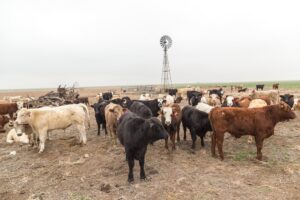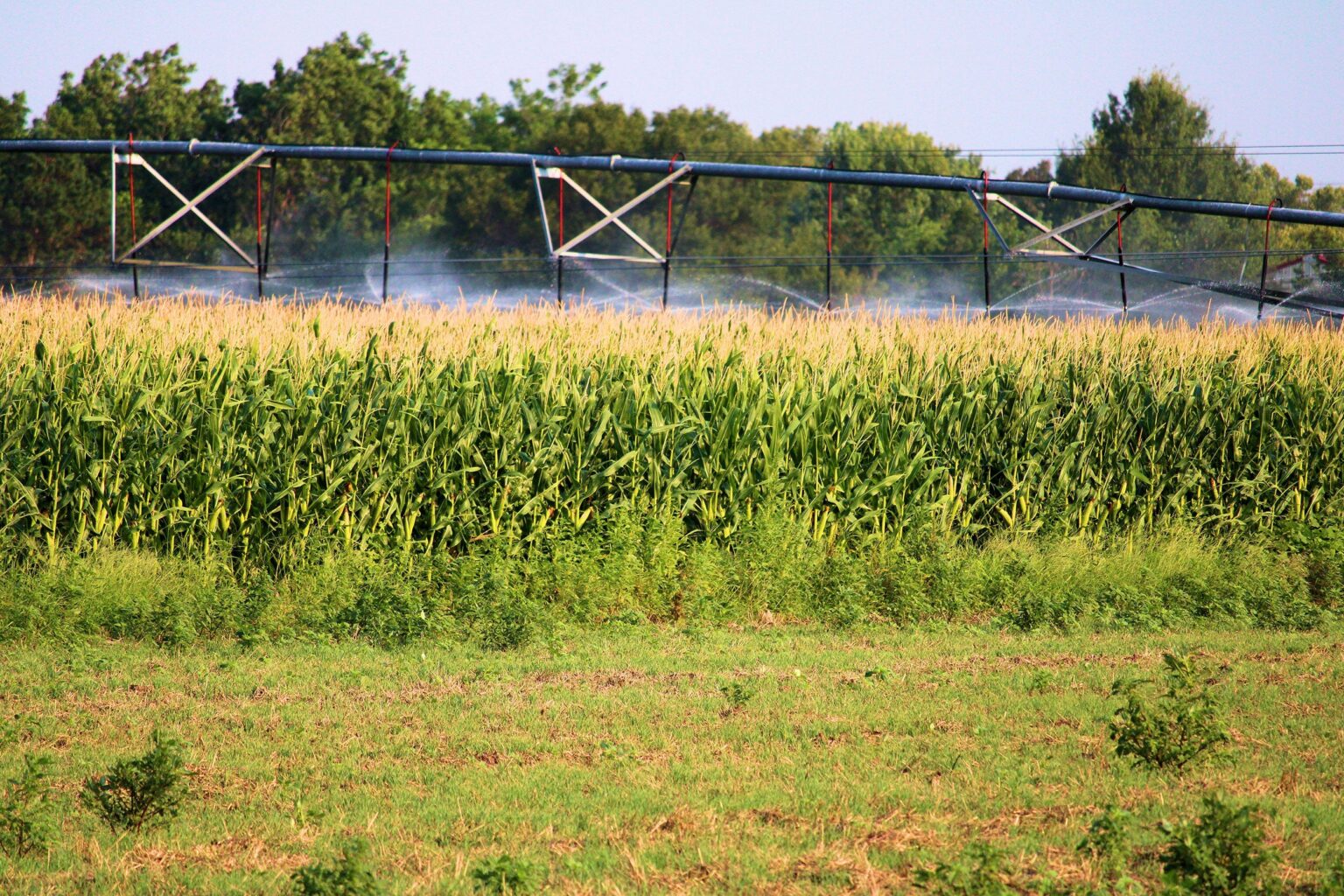Subscribe to Updates
Get the latest agriculture news and updates directly to your inbox.
Author: staff
INDIANAPOLIS — What started as one donation has grown into a massive effort that’s helping people across the country. The South Iredell FFA Chapter received 30,000 pairs of brand-new socks and made it their mission to distribute them to those most in need. The students delivered thousands of pairs to a homeless shelter in North Carolina and have brought the rest of their supply to Indianapolis, where members are assembling care bags for individuals experiencing homelessness throughout the week of the 98th National FFA Convention & Expo. “Living to Serve” projects turn compassion into action, and the FFA chapter at…
By Cami Koons Iowa Attorney General Brenna Bird sent a letter to federal regulators Thursday urging an investigation into refineries that receive exemptions for renewable fuel blending standards. Bird, who was joined by attorneys general from Nebraska and South Dakota in the letter, said some of the small refineries that are eligible for renewable fuel exemptions are “manipulating” the program and feigning they face “disproportionate economic harm” while publicly telling investors they are “financially thriving.” “The possibility that refineries are gaming the system to receive government handouts when they don’t need them hurts Iowa farmers,” Bird said in a statement. “They…
According to local agronomists, corn and soybean harvest is nearing completion across Illinois, though conditions and yields remain mixed as farmers wrap up a long, weather-challenged growing season. Nationally, a Reuters poll of analysts put the U.S. soybean harvest at 84% complete and the corn harvest at 72% finished. Looking back at the 2024 season, as of Oct. 27, 2024, 87% of corn was harvested and 90% of soybeans had been harvested, versus five-year averages of 73% and 80%, respectively. Corn Harvest “Corn harvest slowed a bit this week as everyone went after beans,” said Phil Krieg, an agronomy service…
The roar of blue corduroy filled Lucas Oil Stadium as thousands of FFA members rose to their feet to welcome U.S. Secretary of Agriculture Brooke Rollins, an FFA alumna herself, to the stage at the National FFA Convention & Expo’s Session 2 on Thursday afternoon. Rollins delivered a keynote that was equal parts patriotic address, call to service, and testimony of faith. “The world consumes our food,” Rollins began. “They are not worried about who produced it or where it came from. They only want to know that we have the healthiest (which we do) the most abundant (which we…
A study appearing this month in Nature Microbiology analyzes soils sampled across the state of Kansas to determine the importance of “legacy effects” — or how soils from a specific location are influenced by microbes that have evolved in response to the specific climate at that site for many years. “The bacteria and fungi and other organisms living in the soil can actually end up having important effects on things that matter, like carbon sequestration, nutrient movement, and what we’re particularly interested in — the legacy effects on plants,” said co-author Maggie Wagner, associate professor of ecology & evolutionary biology…
Just after 9 a.m. CT, December corn was down ½¢ at $4.29¾ per bushel. January soybeans were up 3¼¢ at $11.11 per bushel. “Corn, soybeans, and wheat are struggling [Friday] morning as pre-weekend and month end consolidation appears to be the primary trade goal,” said Karl Setzer, partner with Consus Ag Consulting. “The bullish reaction to the Chinese trade agreement has worn off as the trade waits for more details before altering positions. Trade is also hesitant to make big market moves without Chinese confirmation of the agreement.” December CBOT wheat was down 4¾¢ at $5.19½ per bushel. December KC…
By Maximilian Heath BUENOS AIRES, Oct. 30 (Reuters) – Late-season frosts have affected wheat fields in southern parts of Argentina’s agricultural heartland in recent days, the Buenos Aires grain exchange said on Thursday, adding that the full impact was not yet known. Argentina is a major global exporter of wheat, and the exchange estimates that wheat production in the current 2025/26 season will reach 22 million metric tons, which would be the nation’s second-biggest wheat harvest. Following weekend rains, a cold front “advanced over much of the agricultural south, currently going through a critical period,” the exchange said in its weekly crop report.…
By Trevor Hunnicutt and Eduardo Simoes KUALA LUMPUR, Oct. 26 (Reuters) – Brazil’s President Luiz Inacio Lula da Silva said he had a positive meeting on Sunday with U.S. President Donald Trump, and their respective teams will start “immediately” to discuss tariffs and other matters. Trump and Lula spoke on the sidelines of the ASEAN summit in Kuala Lumpur, Malaysia in a meeting to overcome tensions between Brazil and the United States after Trump increased tariffs on U.S. imports of most Brazilian goods to 50% from 10% in August. “We agreed that our teams will meet immediately to advance the search for solutions to the tariffs and…
While Jason Schmit and his brother were spreading manure on the family’s eastern Nebraska farm, a large chunk of rock flew and broke out the back window of the tractor. Schmit said that had never happened to them before. “Out of concern for the safety of the driver and machine, we decided to invest in a protective device,” he said. Commercially available protective screens seemed reasonable, but the brothers were concerned about glare from the tractor lights after dark, and general visibility issues while switching from the spreader to the box scraper and back. Schmit decided to design and fabricate…
On Thursday, U.S. Treasury Secretary Scott Bessent announced that China will buy 12 million metric tons (mmt) of U.S. soybeans from now through January and is committed to buying 25 mmt annually for the next three years. The news came after a report Wednesday that China had purchased three U.S. soybean cargoes. Agriculture Secretary Brooke Rollins said of the news in a social media post that “Trump is fighting back and DELIVERING for American farmers!” Several agricultural groups were quick to celebrate the news. Here’s what they had to say. National Groups American Farm Bureau Association The American Farm Bureau…








:max_bytes(150000):strip_icc()/Biodiesel-Pump-2000-24d6302b753d45e3b290540eff746b40.jpg)
:max_bytes(150000):strip_icc()/52490323187_ed7fcd294b_o-cbed03c9c4ba49eaa2185fff95c667b3.jpg)


:max_bytes(150000):strip_icc()/Markets-8-Soybeans-up-corn-down-3-db6316f9a07e48cc8fa0c5a83551fe7c.jpeg)
:max_bytes(150000):strip_icc()/101517133_wheat-98a162eab2214df39c124f20fe1aa4fe.jpg)
:max_bytes(150000):strip_icc()/WhiteHouse-2000-251df9c5b90d4c7da5a9226a5c8f9dac.jpg)
:max_bytes(150000):strip_icc()/Tractorscreen1November2025AllAroundtheFarm-495e523e7b1f4a79b8aa40f332164ea4.jpg)
:max_bytes(150000):strip_icc()/JJ_Gouin-1264576278-5a26b42c371e4a56b4a3cc20606e7fc9.jpg)